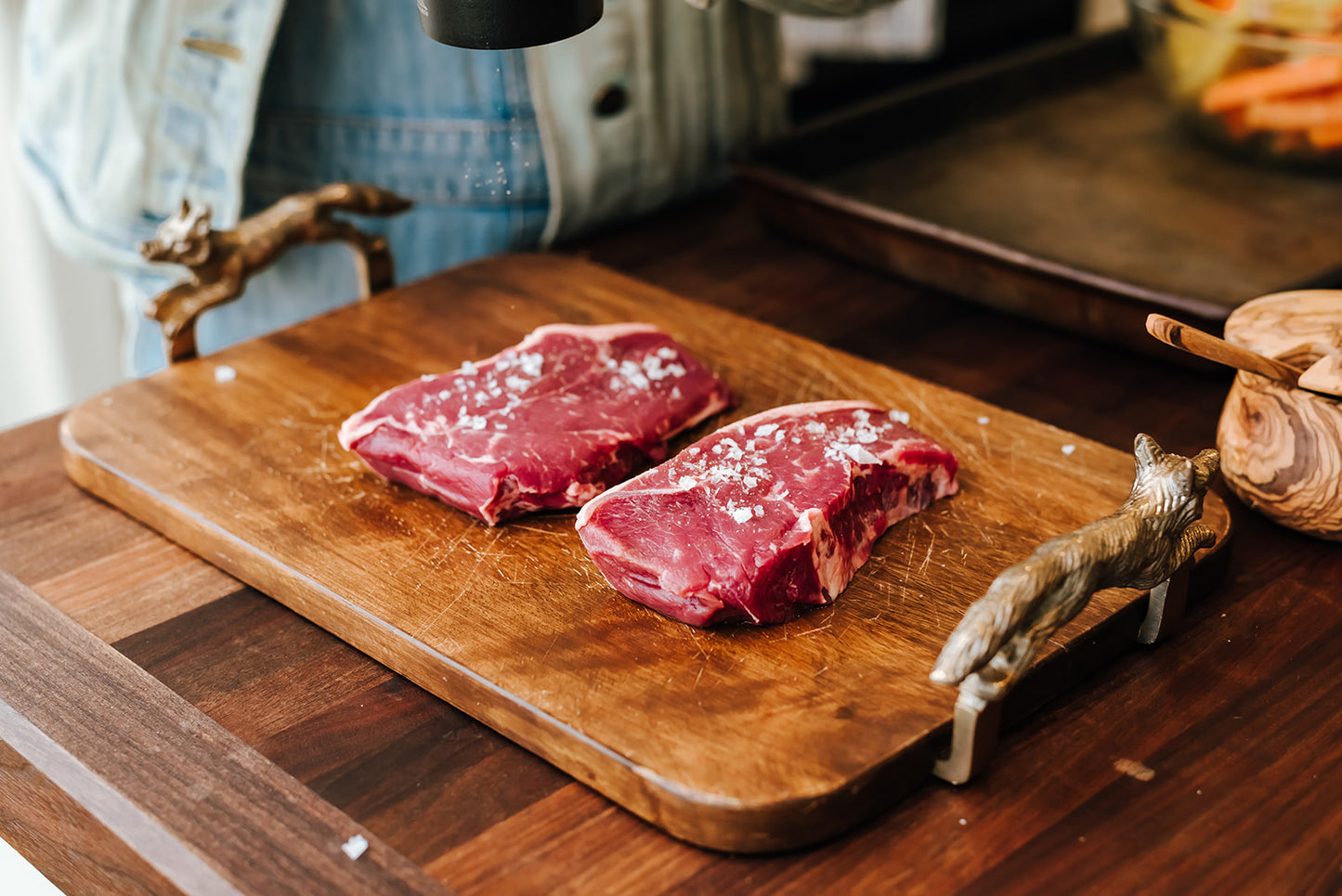
Grassfed beef is not only a healthy and sustainable choice, but it also offers a unique flavor profile that can elevate your culinary creations. However, cooking grassfed beef requires a slightly different approach compared to conventional grain-fed beef. In this blog post, we'll guide you through the art of cooking grassfed beef to help you unlock its delicious potential and achieve tender, flavorful results every time.
Selecting the Right Cuts:
- When cooking grassfed beef, it's crucial to choose the right cuts that are best suited for various cooking methods. If you want a quick and easy grilling or pan-frying experience, Opt for cuts like ribeye, strip steaks, and filets, as they tend to have a good marbling of fat that enhances flavor and tenderness. If you want to marinate a steak that has a rich flavor but might need a bit of acidic help for tenderizing, choose a skirt steak, flat iron, or top sirloin steak. If you prefer a more hands off cooking experience try braising low and slow. Great cuts for low and slow cooking are roasts, short ribs, and brisket.
Preparing and Marinating:
- To enhance the tenderness of grassfed beef, consider marinating it before cooking. This step can help break down the muscle fibers and infuse the meat with additional flavors. Use marinades with acidic components like citrus juice, vinegar, or yogurt to add moisture and tenderize the meat.
Mindful Cooking Techniques:
-
Grassfed beef is typically leaner than grain-fed beef, so it cooks faster and can be more prone to drying out if not handled carefully. Here are some key techniques to keep in mind:
- Searing: Start by searing the beef over high heat to create a delicious crust that seals in the juices. This step adds depth of flavor and enhances the overall texture.
- Lower Heat: Once seared, reduce the heat to medium or medium-low to gently cook the beef. This approach ensures even cooking and prevents excessive moisture loss.
- Use a Meat Thermometer: To achieve the desired doneness, use a meat thermometer to monitor the internal temperature. Grassfed beef is best enjoyed when cooked to medium-rare or medium, as it can become tougher if overcooked.
Resting and Slicing:
- After cooking, allow the grassfed beef to rest for a few minutes before slicing. This resting period allows the juices to redistribute and results in a more tender and flavorful final product. Slice the meat against the grain to maximize tenderness.
Flavorful Pairings:
- To complement the unique flavors of grassfed beef, consider pairing it with fresh herbs, garlic, mushrooms, or robust sauces like chimichurri. These additions can enhance the natural flavors and create a harmonious taste experience.
Cooking grassfed beef requires a mindful approach, but the results are well worth it. By selecting the right cuts, marinating thoughtfully, employing proper cooking techniques, and choosing flavorful pairings, you can unlock the full potential of grassfed beef and create mouthwatering dishes that will impress your family and friends. Embrace the art of cooking grassfed beef, and savor the delectable flavors that this sustainable and nutrient-dense meat has to offer.
